Epically awesome photos of all the real places on Mars in the 'The Martian'
Mark Watney is part of a 6-member team that lands in a large northern basin on Mars, called Acidalia Planitia. This is where the crew establishes their home base, called the "hab." Here's the real life Acidalia Planitia, where shallow pits may have formed from ancient floods or glaciers.

The hab is where Watney spends most of his time. Although Acidalia Planitia is relatively flat, here we can see a young crater in exquisite detail. HiRISE images have false coloring that highlights distinct Martian features like the ejected material in this crater.
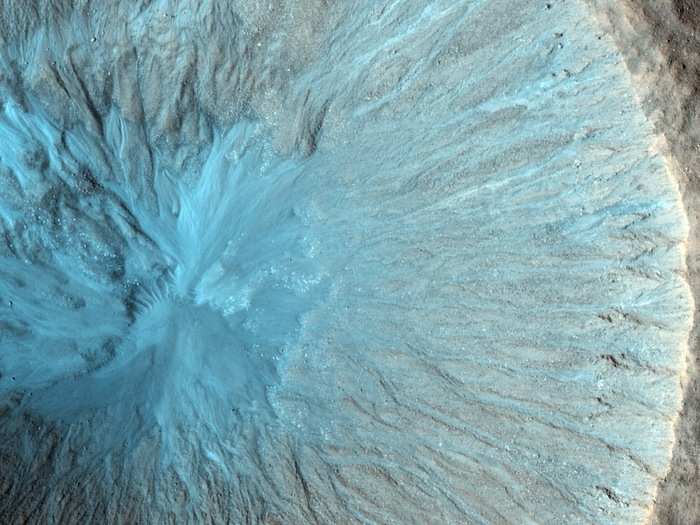
Stranded on Mars, Watney had no technology to communicate with the crew in space or NASA back on Earth. But Watney's a clever guy: He realizes that NASA's Mars lander, Pathfinder, is close by in the Martian valley called Ares Vallis. So he retrieves it and uses it to talk to NASA who, he hopes, can help save him. Here's how far Acidalia Planitia is from Ares Vallis.
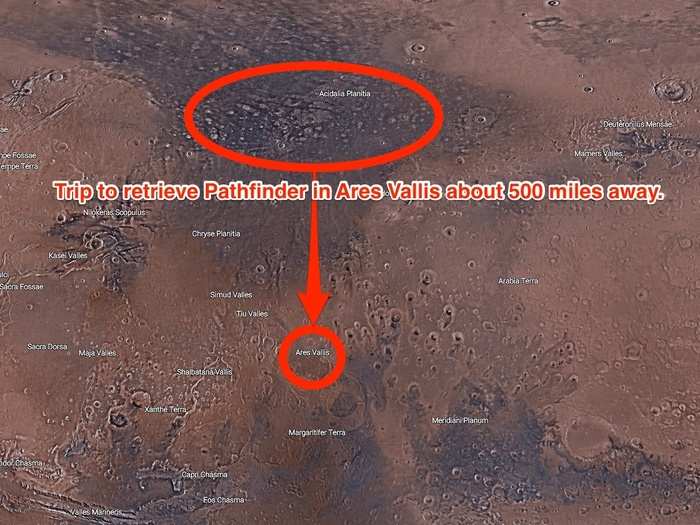
Ares Vallis, where the real-life Pathfinder is right now, is a channel on Mars with high ridges and steep drops. Features like these make scientists think that Ares Vallis might have been made by many large catastrophic floods on a younger Mars billions of years ago.
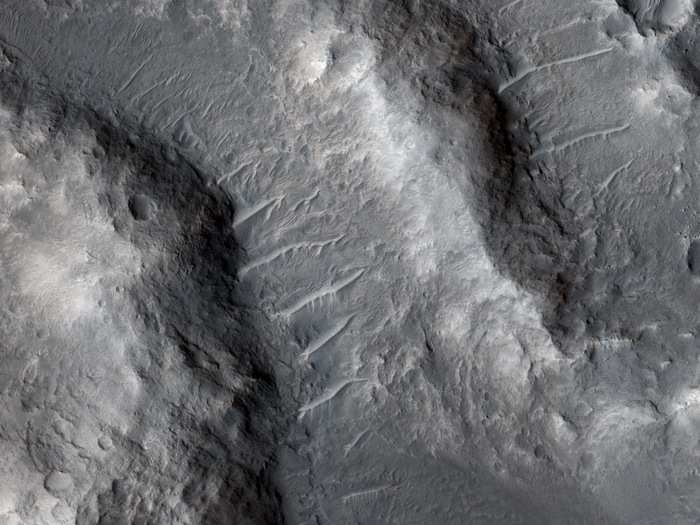
If you were actually going to retrieve Pathfinder like Watney does in the book, you'd have to fight through some rough and rocky terrain. The camera on board Pathfinder sent back this photo in 1997 of the Martian environment surrounding the lander's final resting place.
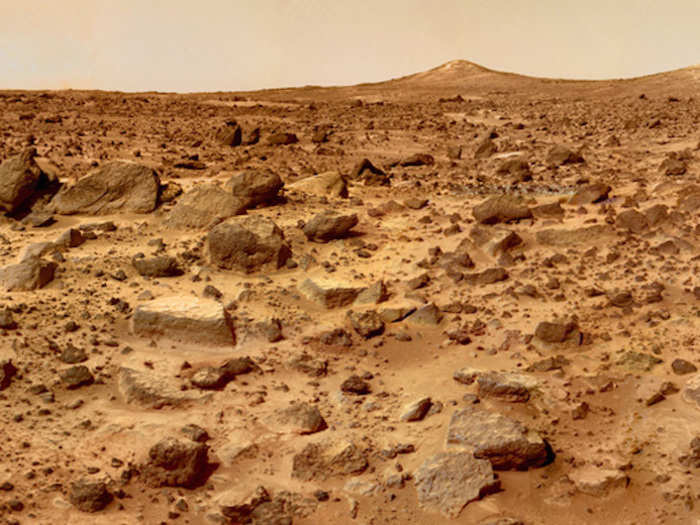
After Watney returns to the hab and starts talking with NASA via Pathfinder, he eventually learns that his crew has turned around and is headed back to Mars for him. They can't land on Mars, so Watney has to get to the nearest rocket — 2,000 miles away in Schiaparelli crater — and catch his ride in space. The first stop on this epic journey is Mawrth Vallis, shown in the map below:
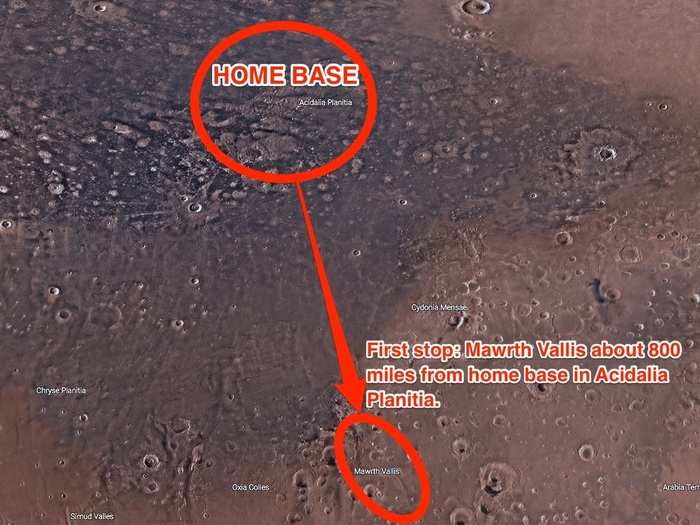
Mawrth Vallis is one of the oldest valleys on Mars and contains a special kind of clay that only forms in the presence of water. Lining the sides of the valley are craters that might have harbored large lakes of liquid water in the past. Shown here are oddly-shaped sand dunes decorating the floor of one of those craters along Mawrth Vallis.
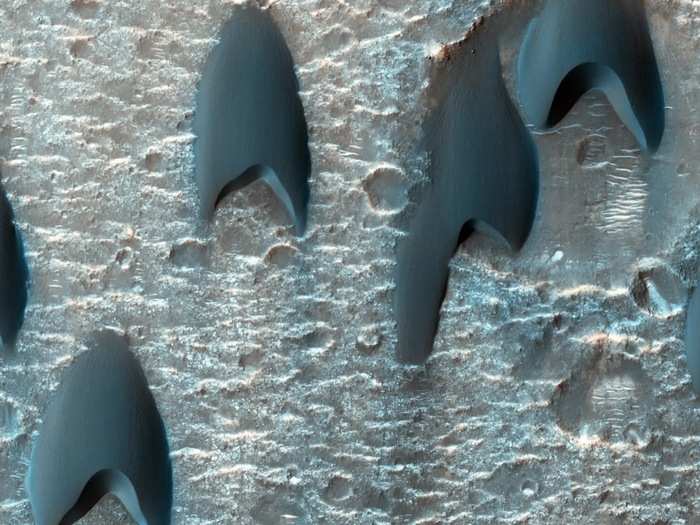
Because of the clay deposits in Mawrth Vallis, NASA considered landing their Curiosity rover there in 2011 but ultimately decided on Gale Crater. Organic materials could be preserved in this type of water-infused clay, which is why scientists are especially interested in studying regions like this. The photo below shows some of the sandy pits and tall plateaus of the region.

After traversing Mawrth Vallis, Watney comes upon Marth crater. Marth is one of many surrounding impact craters scarring the Martian surface. It's 61 miles across and is named for 19th-Century German astronomer Albert Marth.
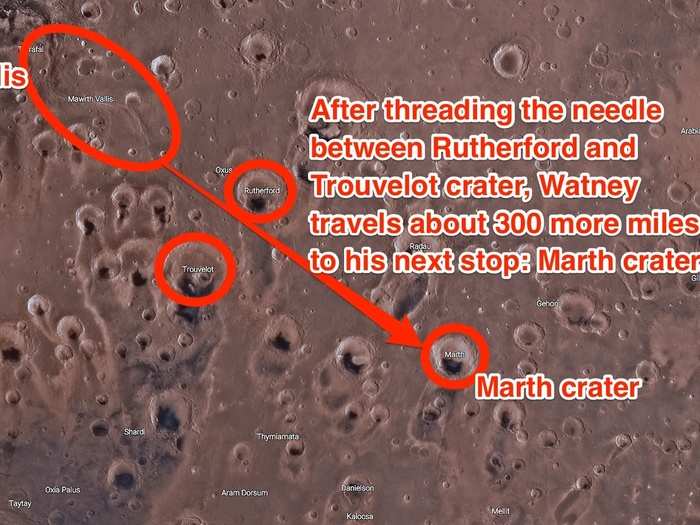
Marth crater is located in a larger region called Arabia Terra, which is one of the dustiest places on Mars and covers an expanse of about 2,800 miles. Here, you can see how winds have blown streaks of dust to the left, or west, of dunes.
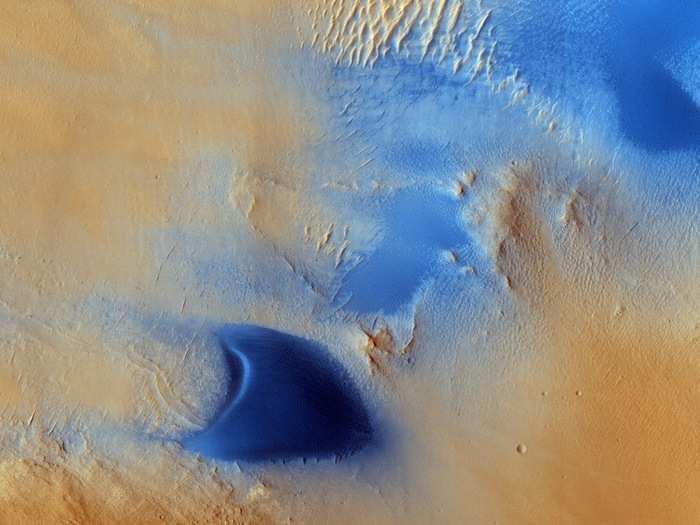
Because Arabia Terra is so dusty, the surface is relatively smooth, which makes it easy to spot recent impacts like the one in the upper left of this image. Watney was supposed to ride through here on his way to the rocket in Schiaparelli crater, but a dust storm forces him to take a detour toward Terra Meridiana instead.
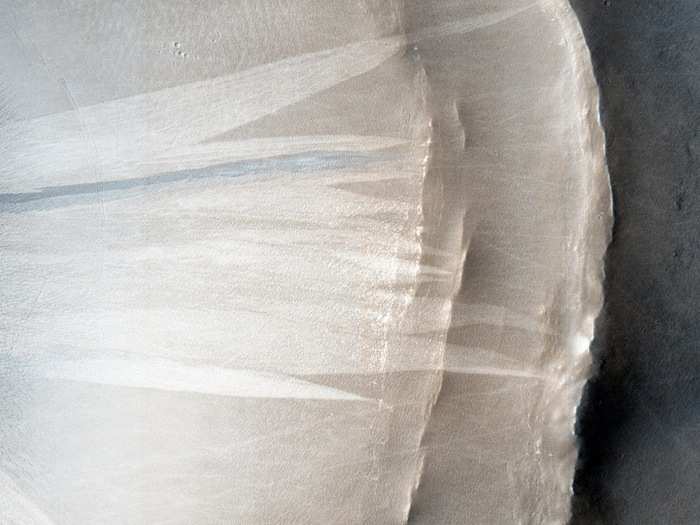
This is one of the only pictures we have from HiRISE of Terra Meridiana, where Watney detoured around the storm. This is one of the longest ancient valleys on Mars, called Samara Vallis. It's south of Schiaparelli and where Watney traveled.
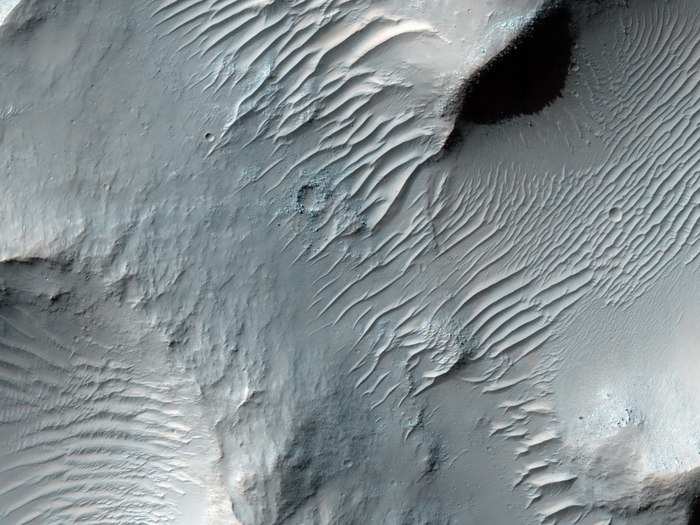
To avoid the dust storm, Watney ends up farther south than he originally planned. But that doesn't stop him from reaching Schiaparelli Crater. This map shows Marth Crater in the upper left and Watney's detour to the south of Arabia Terra.
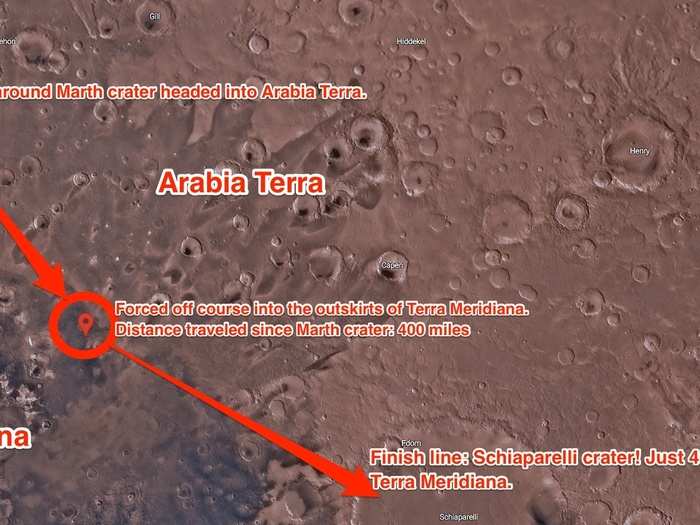
Welcome to Schiaparelli crater — that giant circle near the center of this image. This is a composite photo put together from over 100 different shots taken by the Voyager 1 and 2 spacecrafts in 1980. The crater is 286 miles wide — twice the size of the largest impact crater on Earth, Vredefort Crater.
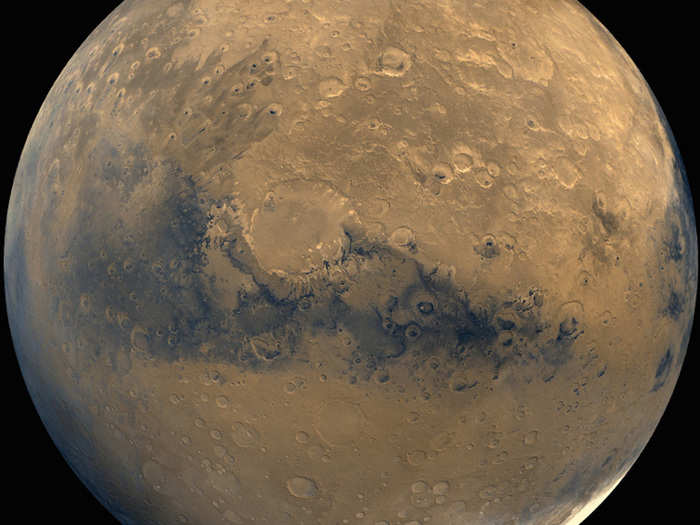
Schiaparelli has multiple smaller craters inside of it. How the exquisite ridges in this crater formed is a mystery to scientists.
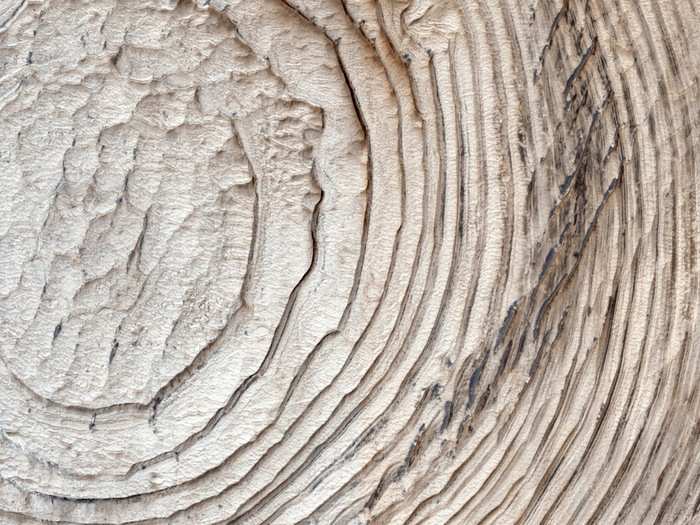
The floor of Schiaparelli crater, where Watney's rocket sits, is covered by a thin layer of sand, shown here in dark blue. Over time, winds kick up this thin layer, exposing the lighter whitish bedrock underneath
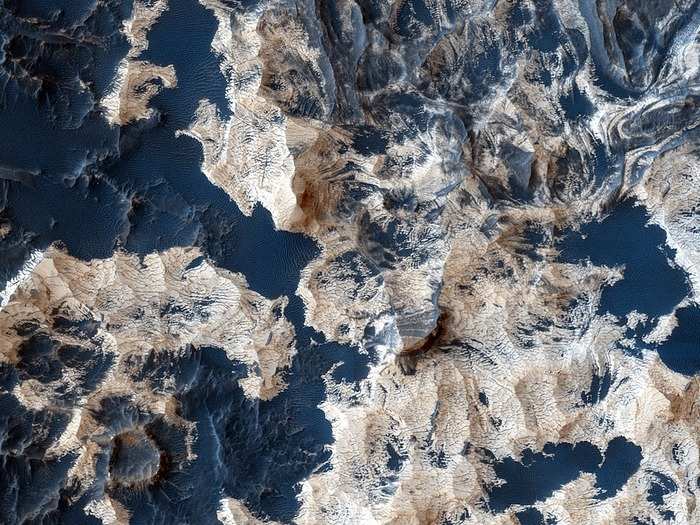
Here's an overall look at Watney's nearly 2,000-mile-long journey from the hab in Acidalia Planitia to the rocket in Schiaparelli Crater. A similar trip for us would be driving from New York City to Denver, CO — but instead of a car, all Watney had was a rover that maxed out at 15 mph! The trip took him 57 1/2 days. Did he make it off the Red Planet? Was he rescued? You'll have to read the book or see the movie to find out.
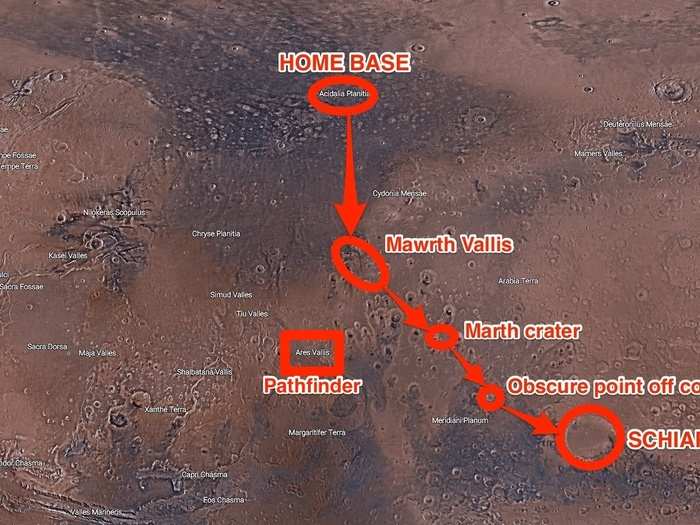
Popular Right Now
Advertisement